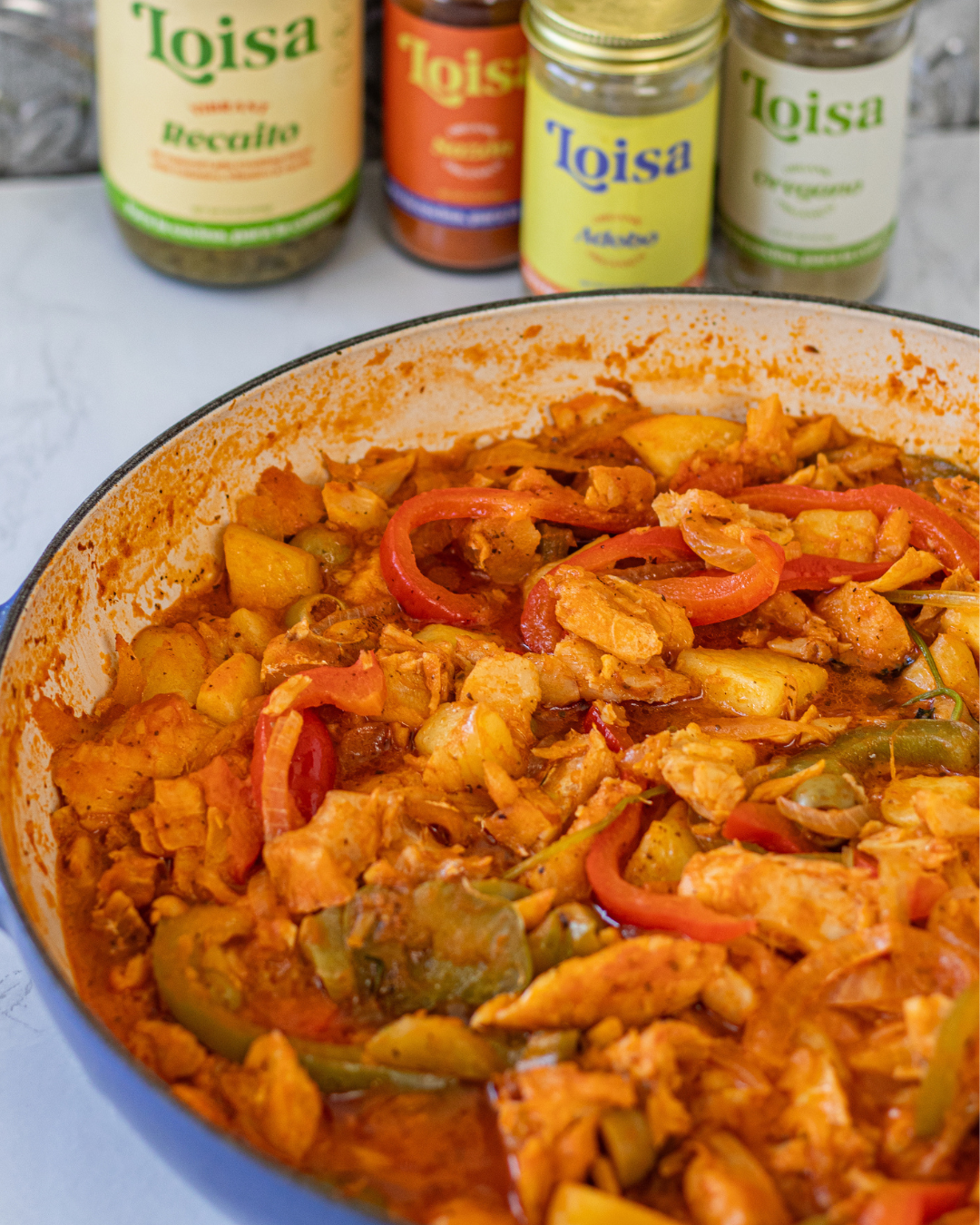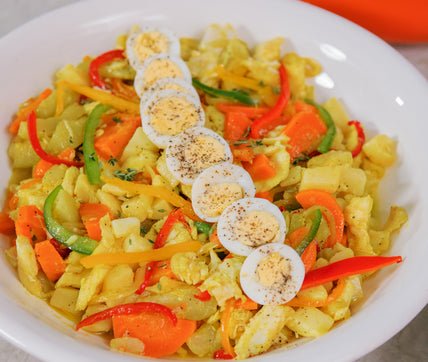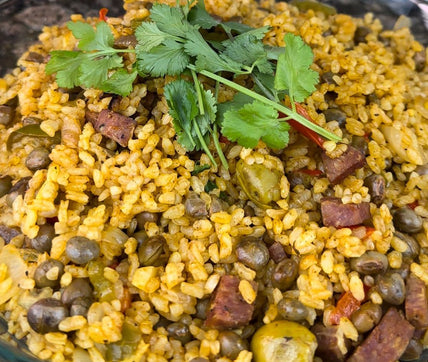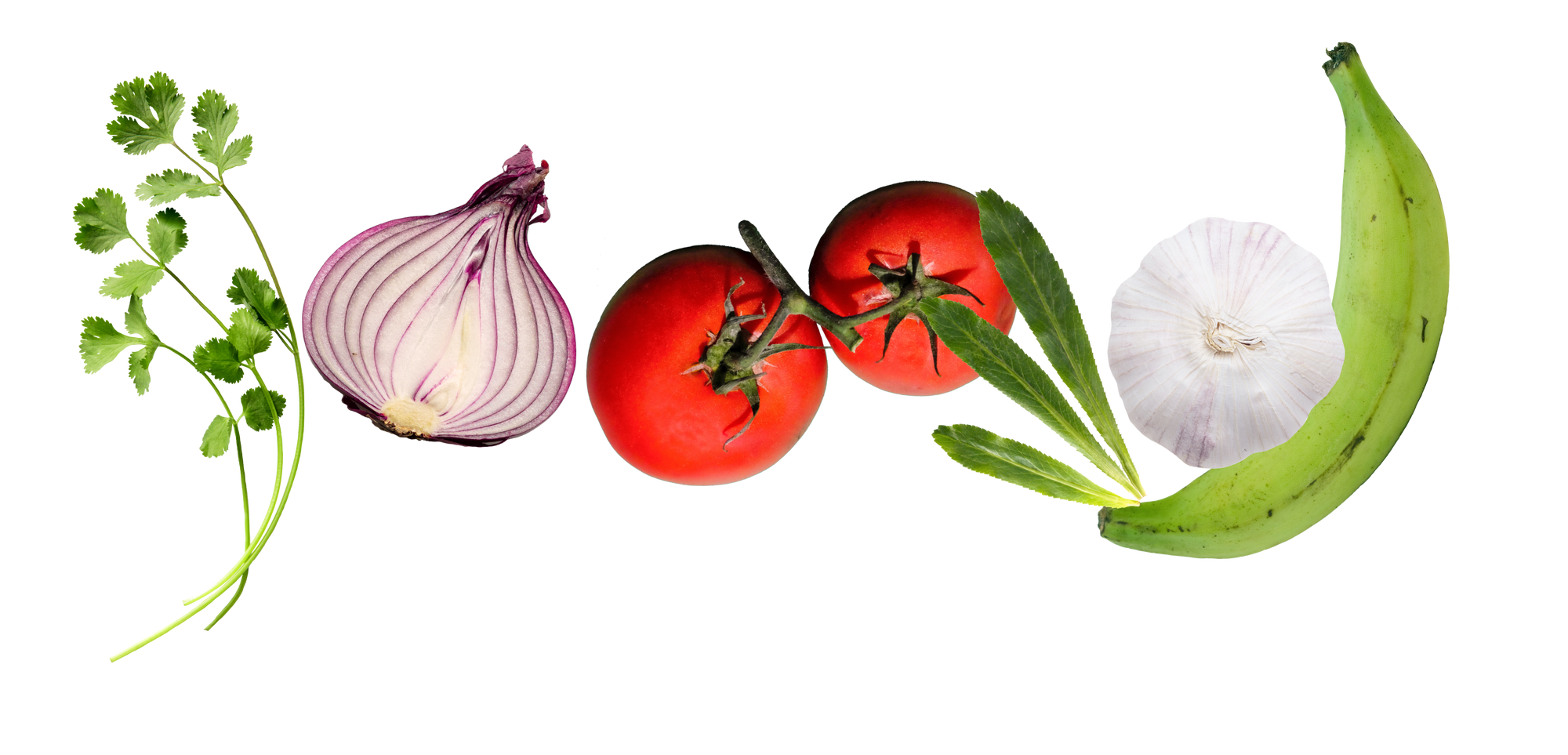
Bacalao Guisado
Stewed salted codfish with Recaito, peppers, and olives.
By: Belqui Ortiz-Millilli & Miriam Ortiz | @belquistwist
Bacalao Guisado has been a part of my life since I can remember. My mom taught my sister and I how to make it very early on because in my family, it's considered a very special dish. In order to keep a kind of sacred feeling when we do have it, we try not to make it very often. But I do have many relatives in my family who make this quite frequently - all taught by my grandmother, my aunts, and my mom.
Bacalao Guisado is a popular dish in the Caribbean, made from salted codfish, known as "bacalao" in Spanish. This dish has a rich history in the region, and its preparation varies from country to country. Another popular use of bacalao is frying the fish into bacalaítos, often sold and enjoyed on the beaches of Puerto Rico. Whenever I'm working with bacalao, I always think about how far back its origins go.

Bacalao has a long history that dates back to the days of exploration and trade. It was a staple food for European sailors and explorers who needed a non-perishable source of protein during their long voyages. The practice of salting and drying codfish allowed it to be preserved for extended periods without refrigeration, making it a valuable trade commodity. Cod was abundant in the North Atlantic, and European countries, particularly Portugal, Spain, and later the English, established a significant trade in dried cod. This trade brought bacalao to the Caribbean, where it was adapted to local cuisines.
I find it very interesting when I look at all the variations of how we make Bacalao Guisado, depending on what island is making it. In the Dominican Republic, where my family is from, Bacalao Guisado is a dish we often enjoy during Lent and Christmas. In my family, it's usually made for a special dinner. In certain recipes, the codfish is soaked for several hours or even days to remove excess salt, then it's flaked and simmered in a tomato-based sauce with various seasonings like bell peppers, onions, olives, corn oil or sometimes even achiote oil (made from annatto seeds) for added flavor. My family has adapted adding potatoes, which are usually found in the Puerto Rican version. This dish is typically served with rice or a root vegetable (like yuca) and tostones (fried plantains). I also love some wedges of avocado with it - that to me makes it the perfect serving!

Puerto Rican Bacalao Guisado is similar to the Dominican version, but can have variations in the seasoning and ingredients. It's often prepared with sofrito, and in this recipe, I used Loisa's Recaito. The Recaito provides a nice vibrant and herby flavor that lent itself perfectly with the codfish. In addition to the Recaito, the potatoes I include gives it a unique twist.
In Cuba, this dish is known as "Bacalao a la Vizcaína." It incorporates a sofrito-like sauce with green and red bell peppers, onions, garlic, tomatoes, and various seasonings, closest to Loisa's Classic Sofrito. The cod is often served with white rice and black beans, and it's a favorite comfort food for many Cubans. I have yet to taste a Cuban Bacalao a la Vizcaína, but I cannot wait to do so!
There are quite a variety of ways to make Bacalao Guisado, and each way is distinct and delicious! While the core ingredients of salted codfish and a flavorful sauce remain consistent, the specific seasonings, vegetables, and sides used can vary widely - which makes this a great dish to cook if you really want to get creative in the kitchen and try something new.

A special note about this recipe (which came directly from my mom) is that you could make this dish ahead of time, and even freeze it!
To make ahead:
Prepare the Bacalao Guisado the evening before you plan to have it. Reheat over medium to low heat, covered until it is warmed through. Add a bit of hot water if needed once it is warm and still cooking.
To freeze after cooking:
My mom is the freezing queen and loves to freeze Bacalao Guisado if she has leftovers and isn’t planning on eating it in a few days. She places it in a freezer-safe container, makes sure liquid is covering to the top of the fish, and lightly tops the liquid with saran wrap to avoid freezer burn. She keeps it for no longer than two weeks in the freezer. Once ready to reheat, let it sit for a bit so the saran wrap comes off easily. She reheats on the stove as she does in the “make ahead” process above.




